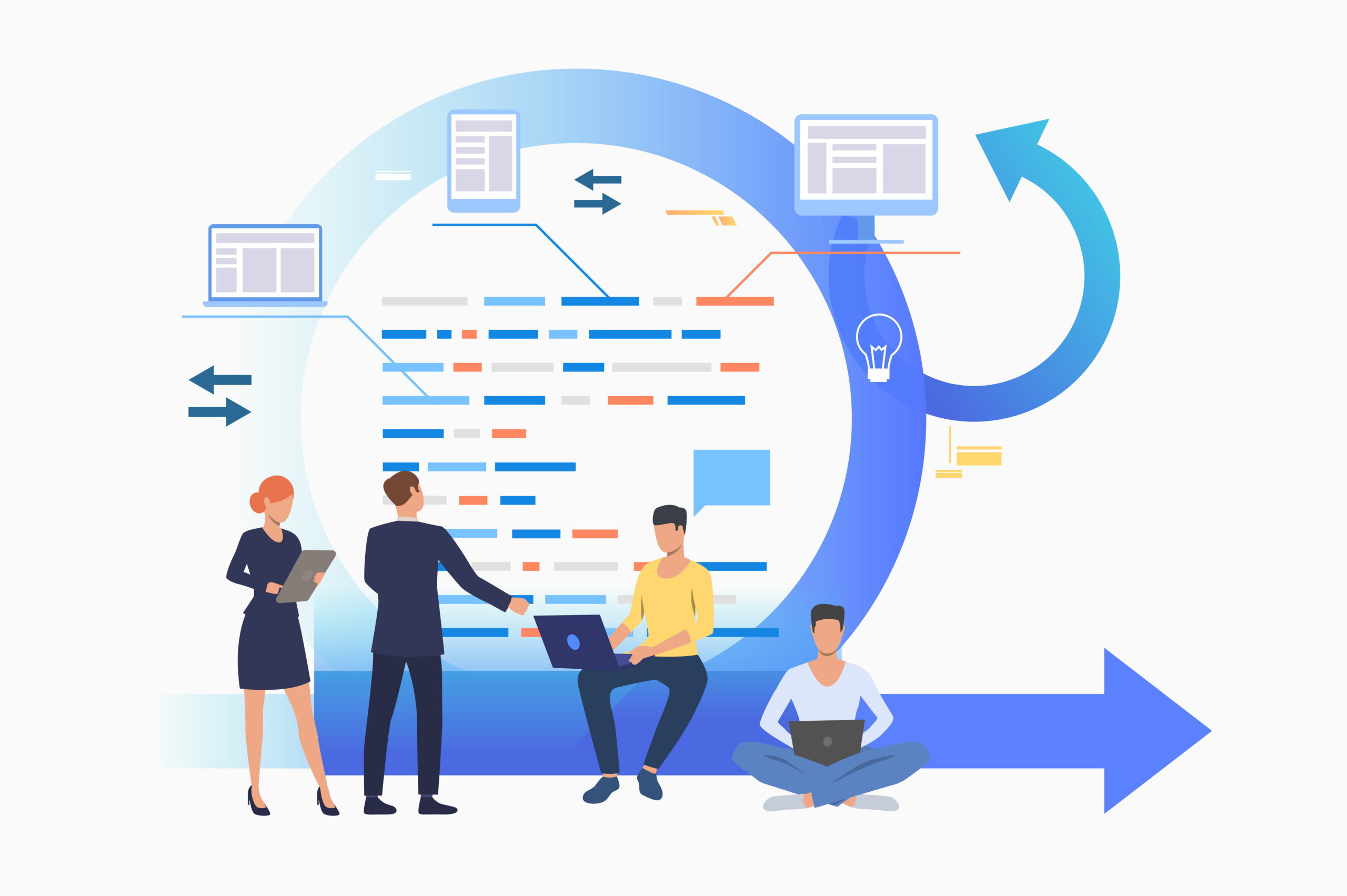Key Benefits of Using an Agile Release Train in SAFe

In today’s fast-moving digital landscape, organizations need a structured yet flexible way to deliver value at scale. Many enterprises adopt the Scaled Agile Framework (SAFe) to align teams, improve collaboration, and deliver continuous value to customers. At the center of this framework lies the Agile Release Train (ART), a powerful construct designed to bring together multiple teams and ensure consistent, predictable delivery.
This article explores the key benefits of using an Agile Release Train in SAFe, how it helps enterprises scale agility, and why it has become a cornerstone of large-scale agile transformations.
What Is an Agile Release Train?
An Agile Release Train is a long-lived team of agile teams—usually between 50 to 125 people—that plan, commit, and deliver together in a synchronized manner. Unlike traditional project structures that often work in silos, the ART is a cross-functional, self-organizing group aligned to a common business mission.
The Agile Release Train follows a fixed cadence of Program Increments (PI), typically lasting 8 to 12 weeks. Within this time frame, teams work toward shared objectives, build solutions, and release features that deliver customer value.
1. Alignment Across Teams and Business Goals
One of the biggest benefits of using an Agile Release Train in SAFe is alignment. In large organizations, multiple teams often work on related products but lack synchronization. This creates duplication, delays, and missed business opportunities.
The Agile Release Train eliminates these issues by ensuring:
- All teams share the same vision and roadmap
- Priorities are set based on business value rather than individual team goals
- Dependencies are identified and managed early
This alignment allows organizations to move as one unified system, reducing friction and improving speed to market.
2. Predictable Delivery of Value
Traditional project management often suffers from unpredictable timelines and shifting priorities. The Agile Release Train solves this problem by operating on a fixed PI cadence. This predictability helps stakeholders know when to expect new features and improvements.
For business leaders, predictable delivery means:
- More reliable release planning
- Better forecasting for revenue and customer impact
- Increased trust in the organization’s ability to deliver
Customers also benefit from consistent releases, as they see regular product improvements rather than waiting months or years for updates.
3. Enhanced Collaboration and Transparency
Collaboration is at the core of agile, but scaling it across multiple teams is challenging. The Agile Release Train in SAFe fosters transparency through events like PI Planning, where all teams come together to plan objectives for the next increment.
Key outcomes include:
- Open visibility into team goals and dependencies
- Stronger cross-team communication
- Shared ownership of outcomes
This transparency reduces misalignment and builds a culture of accountability where every team member understands how their work contributes to enterprise goals.
Read More: The Global Newz
4. Faster Time to Market
In a competitive environment, speed matters. By synchronizing teams and focusing on delivering value incrementally, the Agile Release Train significantly reduces time to market.
Instead of waiting for entire projects to complete, enterprises can release valuable features earlier. This allows organizations to:
- Gain customer feedback quickly
- Adjust to market changes with agility
- Deliver competitive advantage sooner
The ART’s incremental approach ensures value flows continuously, not just at the end of long project cycles.
5. Improved Quality Through Built-In Processes
Quality is not something added at the end of development; it must be integrated throughout the process. The Agile Release Train incorporates practices such as continuous integration, automated testing, and system demos to ensure quality is built in.
Some of the benefits include:
- Early detection of defects
- Reduced rework and technical debt
- Higher confidence in releases
By embedding quality into the ART workflow, organizations ensure products meet customer expectations without sacrificing speed.
6. Stronger Employee Engagement and Motivation
Large enterprises often struggle with keeping employees motivated when they feel disconnected from the bigger mission. The Agile Release Train addresses this challenge by creating a sense of shared purpose.
Employees benefit from:
- Clear visibility into how their work impacts customers
- Regular opportunities to collaborate and innovate
- A culture of shared responsibility
When teams feel part of something larger than themselves, engagement rises, leading to higher productivity and retention.
7. Better Risk Management
Managing risks across multiple projects can be complex. The Agile Release Train in SAFe minimizes risks through continuous planning, synchronization, and transparency. Risks are identified early during PI Planning and reviewed regularly in ART events.
With proactive risk management, organizations can:
- Mitigate dependency bottlenecks
- Identify potential delivery challenges
- Adjust plans quickly when needed
This reduces the chances of large-scale failures and ensures smoother delivery.
8. Customer-Centric Delivery
At its core, the Agile Release Train is designed to deliver customer value. Every feature and user story is tied to business objectives, ensuring that development aligns with customer needs.
This customer focus results in:
- Higher satisfaction rates
- Products that solve real problems
- Stronger long-term customer loyalty
By keeping the customer at the center, organizations avoid wasted effort on low-value features.
9. Scalability for Large Enterprises
The Agile Release Train was created to solve the challenges of scaling agile beyond small teams. For large enterprises, it provides a repeatable, scalable model that can coordinate hundreds or even thousands of people.
Through ARTs, enterprises can:
- Scale agile practices across departments
- Ensure consistent delivery regardless of size
- Create an adaptable framework for growth
This scalability makes the ART a vital component of enterprise agility.
10. Continuous Improvement and Innovation
Finally, the Agile Release Train supports continuous improvement. After each Program Increment, teams hold Inspect and Adapt workshops to reflect on what worked well and what needs improvement.
This fosters a culture of innovation where teams:
- Experiment with new practices
- Learn from failures quickly
- Continuously raise the bar for performance
By embedding improvement cycles, organizations ensure they stay relevant in an evolving market.
Conclusion
The Agile Release Train in SAFe is more than just a coordination mechanism; it is the backbone of enterprise agility. From alignment and predictability to faster delivery and improved employee engagement, the ART offers numerous benefits that help organizations thrive in today’s competitive environment.
By embracing the Agile Release Train, enterprises not only deliver value more consistently but also build a culture of transparency, collaboration, and customer focus. As more organizations undergo digital transformation, the ART will remain a critical enabler of scaled agility and long-term success.




